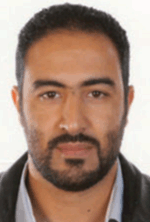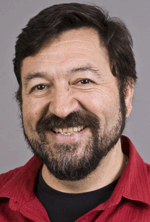Composition changes of hydrocarbons during secondary petroleum migration
S. Borazjani A B , D. Kulikowski A , K. Amrouch A and P. Bedrikovetsky AA Australian School of Petroleum, The University of Adelaide, Adelaide, SA 5005, Australia.
B Corresponding author. Email: sara.borazjani@adelaide.edu.au
The APPEA Journal 58(2) 784-787 https://doi.org/10.1071/AJ17127
Accepted: 26 February 2018 Published: 28 May 2018
Abstract
We investigate secondary migration of hydrocarbons with significant composition difference between the source and oil pools in the Cooper-Eromanga Basin, Australia. The secondary migration period is significantly shorter than the time of the hydrocarbon pulse generation, so neither adsorption nor dispersion of components can explain the concentration difference. The filtration coefficients, obtained from oil compositions in source rock (Patchawarra Formation) and in the reservoir (Poolowanna Formation and Hutton Sandstone), monotonically increase as carbon number increases. The monotonicity takes place for heavy hydrocarbons (n > 10). Loss of monotonicity for light and intermediate hydrocarbons can be explained by their evaporation into the gas phase. The evaporation of light and intermediate hydrocarbons into the gas phase is supported by their concentrations in oil, which are higher in source rock than in trapped reservoir oil. The paper proposes deep bed filtration of hydrocarbons with component kinetic retention by the rock. Introduction of the component capture rate into the mass balance transport equation allows matching the concentration difference, and the tuned filtration coefficients are in the common range. The results suggest that deep bed filtration controls the final reservoir oil composition during secondary migration in the Cooper-Eromanga Basin petroleum system, which was not previously considered.
Keywords: deep bed filtration, filtration, petroleum system, secondary migration.

Dr Sara Borazjani graduated from the University of Adelaide with a PhD in Petroleum Engineering in February 2016. She has since worked as a Postdoctoral Fellow at the university’s Australian School of Petroleum. Her research interests include mathematical modelling of multi-phase, multicomponent flow in porous media, enhanced oil recovery methods and fines-assisted water flooding for improved oil production. |

Dr David Kulikowski recently completed his PhD in structural geology and geophysics from the Australian School of Petroleum, University of Adelaide. His PhD was entitled ‘Modern structural analysis of subsurface provinces: a case study on the Cooper and Eromanga Basins, Australia’ and involved the analysis of micro-, meso- and macro-scale data obtained through geophysics or core analysis. He produced nine first author papers (published in highly respected journals such as Tectonics, Marine and Petroleum Geology, Journal of Structural Geology, the Australian Journal of Earth Sciences and Geophysical Prospecting) and contributed to several other papers as a co-author. He was awarded the Dean’s Commendation for Doctoral Thesis Excellence and nominated by both of his PhD reviewers for the University Doctoral Research Medal. David will begin his industry career with Woodside Energy in 2018. |

Dr Khalid Amrouch is a structural geologist with expertise in geomechanics. He graduated from the University of Pierre and Marie Curie (Paris) with an MSc and a PhD in structural geology. His main interest relates to brittle tectonics, fracture characterisation and 4D stress analyses. Khalid started his career in 2005 at the Institut Français du Pétrole, which sponsored his studies, followed in 2010 by a position as research engineer at Mines PariTech. In 2012, Khalid spent one year working for BHP as an exploration geologist in Chile, before joining the Australian School of Petroleum in February 2013. Since then, Khalid has been an active member of the S3 Research Group, one of the largest geoscience research groups at the University of Adelaide. |

Dr Pavel Bedrikovetsky is a Professor and Chair in Petroleum Engineering at the Australian School of Petroleum in the University of Adelaide. He is also a senior staff consultant to Petrobras. He holds BEng and MSc degrees in applied mathematics, a PhD degree in fluid mechanics and a DSc degree in reservoir engineering, all from Moscow Gubkin Petroleum University. |
References
Bedrikovetsky, P. G. (1993). ‘Mathematical Theory of Oil & Gas Recovery.’ (Kluwer Academic Publishers: London, Boston, Dordrecht.)Heath, R., McIntyre, S., and Gibbins, N. (1989). A Permian origin for Jurassic reservoired oil in the Eromanga Basin. In ‘Proceedings of the Cooper and Eromanga Basins Conference’. Australia. (Ed. B. J. O’Neil.) pp. 405–416. (Petroleum Exploration Society of Australia, Society of Petroleum Engineers, Australian Society of Exploration Geophysicists (SA Branches): Adelaide)
Helset, H. M., and Lake, L. W. (1998). Three-phase secondary migration of hydrocarbon. Mathematical Geology 30, 637–660.
| Three-phase secondary migration of hydrocarbon.Crossref | GoogleScholarGoogle Scholar |
Kulikowski, D., and Amrouch, K. (2017). Combining geophysical data and calcite twin stress inversion to refine the tectonic history of subsurface and offshore provinces: a case study on the Cooper-Eromanga Basin, Australia. Tectonics 36, 515–541.
| Combining geophysical data and calcite twin stress inversion to refine the tectonic history of subsurface and offshore provinces: a case study on the Cooper-Eromanga Basin, Australia.Crossref | GoogleScholarGoogle Scholar |
Kulikowski, D., and Amrouch, K. (2018). 3D seismic analysis investigating the relationship between stratigraphic architecture and structural activity in the intra-cratonic Cooper and Eromanga basins, Australia. Marine and Petroleum Geology 91, 381–400.
| 3D seismic analysis investigating the relationship between stratigraphic architecture and structural activity in the intra-cratonic Cooper and Eromanga basins, Australia.Crossref | GoogleScholarGoogle Scholar |
Lake, L. W. (1989). ‘Enhanced Oil Recovery.’ (Prentice Hall: Englewood Cliffs, NJ, USA.)
Lowe-Young, B. S., Mackie, S. I., and Heath, R. S. (1998). The Cooper-Eromanga petroleum system, Australia. Investigation of essential elements and processes. AAPG Bulletin, abstract, 82(13).
Siddiqui, F. I., and Lake, L. W. (1992). A dynamic theory of hydrocarbon migration. Mathematical Geology 24, 305–327.
| A dynamic theory of hydrocarbon migration.Crossref | GoogleScholarGoogle Scholar |


